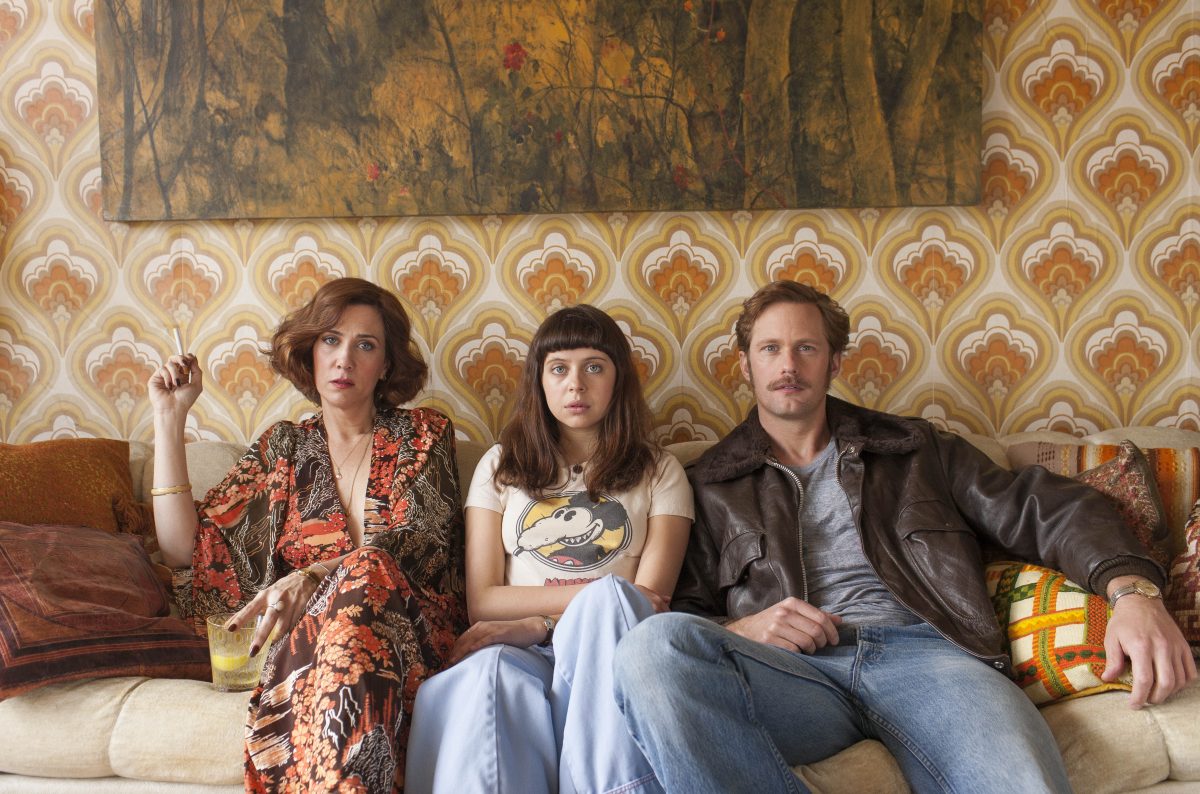
The horny teenage boy who is obsessed with sex is a film staple. His female equivalent? Not so much. That’s just one of the reasons why The Diary of a Teenage Girl is such a refreshing and welcome addition to the coming-of-age genre.
Set in the 1970s, right at the time that Patty Hearst was the topic of much conversation (was she a victim? brainwashed? an urban guerrilla by choice?), the film focuses on 15-year-old Minnie (Bel Powley), who gravely informs us that she just had sex for the first time. She needs to talk about it, so she tells her story—diary-like—into a tape recorder, which handily provides the film’s narration (and a major plot point). The boy she lost her virginity to, however, is not a boy at all, but a man—her mother’s wastrel, if languorously sexy boyfriend Monroe (Alexander Skarsgard).
Minnie’s mother Charlotte (Kristen Wiig) is a loving but not particularly present figure in her daughter’s life. She had Minnie when she was just a teenager herself and she’s turned the apartment where Minnie lives with her younger sister Gretel (Abby Wait) into something of a den of iniquity, with her friends constantly draped all over the furniture doing coke and hanging out, offering Minnie glasses of wine and encouraging her to dance with them. Charlotte believes that a woman is not complete without a man, and she often encourages Minnie to dress more provocatively, to take a more keen interest in boys, and to exploit her youthful physique before “things start to fall.”
Minnie decides that she wants to be a cartoonist, so the film occasionally animates her drawings, illustrating her innermost thoughts and her clever, creative views on life. It’s not surprising that some of these drawings are explicitly sexual, but in a surrealist, witty way. “Are these supposed to be sexy?” a male classmate of Minnie’s asks with dismay. (Minnie starts sleeping with him but he can’t handle her because she’s “too passionate.”).
It’s important to note that Powley is 23 years old, not 15—although she looks astonishingly young; with her saucer-shaped eyes and slight slouch; even her nude form, which we see a lot, seems to have a layer of baby fat. Regardless of her age, she’s remarkable in the part, showing us all the contradictions of female teenage-hood: One minute Minnie is aware of her sexual allure, the next minute she’s convinced she’s ugly and fat. One minute, she’s a confident seductress; the next minute, a sulking little girl. (Could the answer to the question of Patti Hearst be that she was both victim and master of her own fate?). The film’s great joke is that, ultimately, Minnie is more mature than Monroe. Or maybe it’s not a joke at all. Everyone in the film is looking for love and acceptance in their own way, including the hapless Monroe.
This is tricky stuff, handled without judgment by first-time director Marielle Heller—who also gives the film a wonderful palette of burnt oranges and mustards and burgundys and captures the swirling, hazy sensuality of the day. But it’s that very lack of judgment that left me slightly uneasy. Today, we might describe Monroe as a predator, or possibly a criminal, even if Minnie was an eager and willing participant in the sex. But in the ’70s we didn’t have as much of a vocabulary to deal with this kind of sexual abuse. The film seems to take on a ’70s ethos, seeing him as more of a loveable loser, a ne’er-do-well whose great punishment will be that one day Minnie will surpass him. She’ll blossom into a strong, self-actualized woman, while he’ll always be this aimless man-child. But even with his ’70s ‘stache, Skarsgard is a total fox. Would we have felt differently about his character if he was played by someone like Jonah Hill? (Short answer: yes).
Still, the best films always give us lots to think about. And no matter how you feel about Monroe, you’ll be happy to meet the strong, smart—and yes—unapologetically horny teenage Minnie and, for two hours, be immersed in her world.
